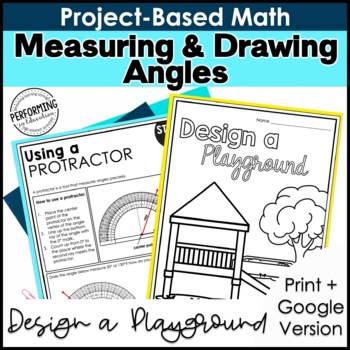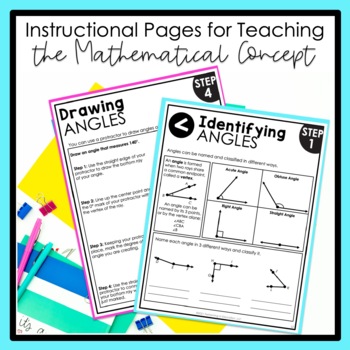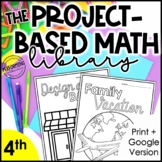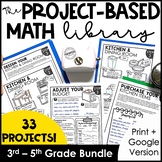Math Project-Based Learning: Measuring & Drawing Angles | 4th Grade
- PDF
- Google Apps™

What educators are saying
Also included in
- This is a library of 11 project-based math resources for 4th grade. Each project-based math unit covers a specific math standard which makes these units perfect for standards-based math instruction.Each unit is a 5-day project-based math resource that applies math concepts in a real-world scenario.Price $35.00Original Price $54.89Save $19.89
- This is a multi-grade library of 33 project-based math resources for grades 3-5. Each project-based math unit covers a specific math standard which makes these units perfect for standards-based math instruction.Each unit is a 5-day project-based math resource that applies math concepts in a real-worPrice $99.00Original Price $164.67Save $65.67
Description
This 5-day project-based math resource applies math concepts in a real-world scenario to teach students about measuring and drawing angles. In this 5-day unit, students will use their knowledge of geometry and angles to design a playground. This math project is engaging and authentic. Plus, it's available as both a digital and print resource.
This project-based math resource is aligned with the following 4th Grade Math Common Core State Standards:
CCSS.MATH.CONTENT.4.MD.C.5
Recognize angles as geometric shapes that are formed wherever two rays share a common endpoint, and understand concepts of angle measurement:
CCSS.MATH.CONTENT.4.MD.C.5.A
An angle is measured with reference to a circle with its center at the common endpoint of the rays, by considering the fraction of the circular arc between the points where the two rays intersect the circle. An angle that turns through 1/360 of a circle is called a "one-degree angle," and can be used to measure angles.
CCSS.MATH.CONTENT.4.MD.C.5.B
An angle that turns through n one-degree angles is said to have an angle measure of n degrees.
CCSS.MATH.CONTENT.4.MD.C.6
Measure angles in whole-number degrees using a protractor. Sketch angles of specified measure.
CCSS.MATH.CONTENT.4.MD.C.7
Recognize angle measure as additive. When an angle is decomposed into non-overlapping parts, the angle measure of the whole is the sum of the angle measures of the parts. Solve addition and subtraction problems to find unknown angles on a diagram in real world and mathematical problems, e.g., by using an equation with a symbol for the unknown angle measure.
This resource is available in both Printable & Digital Google Slides versions.
What's included in this resource:
•Background Knowledge: Using a KWL, students will build background knowledge around designing a playground.
•Geometry Concepts: Using the included instructional pages, students will review geometry and angle vocabulary.
•Identifying Angles: Students will learn how to classify and name angles.
•Measuring Angles: Using the included instructional pages, students will learn how to measure angles by considering the fraction of the circular arc between the two points where the rays intersect the circle.
•Design the Playground: Using concepts of angles and geometry, students will choose where each piece of playground equipment will be located within the playground.
•Using a Protractor: Students will learn how to properly use a protractor to measure angles.
•Slide and Sandbox Design: Using concepts of measuring angles, students will choose a slide and sandbox design for the playground that is safe and appropriate.
•Drawing Angles: Using the included instructional pages, students will learn how to use a protractor to draw angles of a specific measure.
•Monkey Bars and Seesaw Design: Using concepts of drawing angles, students will create monkey bars and a seesaw for the playground to meet specific requirements.
•Adding Angles: Using the included instructional pages, students will learn how to add adjacent angles.
•Add Sprinklers: Using additive adjacent angles, students will add sprinklers to their playground to cover a required area of grass.
•Wrap Up: Students will explain the decisions they made for the playground.
***************************************************************************
Customer Tips:
How to get TPT credit to use on future purchases:
• Please go to your My Purchases page after you log in. Beside each purchase see a Provide Feedback button. Simply click it and you will be taken to a page where you can give a rating and leave a comment for the product. Each time you give feedback, TPT gives you feedback credits that you use to lower the cost of your future purchases. I value your feedback greatly as it helps me determine which products are most valuable for your classroom so I can create more for you.
Be the first to know about my new discounts, freebies and products:
• Click here to follow my store.
*****************************************************************************







